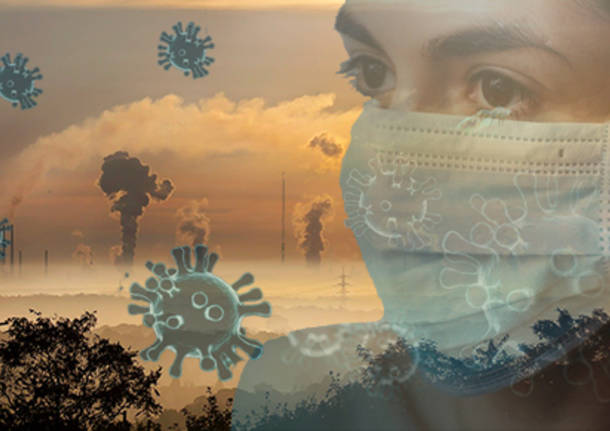(photo from Enea.it) Long-term exposure to air pollution can increase the risk of SARS-CoV-2 infection: one suggests it research conducted by Epimed, the Center for Epidemiology and Preventive Medicine of the University of Insubria the results of which are published online today in the journal Occupational & Environmental Medicine, of the BMJ publishing group. The study, relating to the adult population of the city of Varese (62,848 people), followed in the time since the pandemic began in March 2021, reports a 5 percent increase in the infection rate per 1 microgram / cubic meter increase in PM2.5, 294 more cases per hundred thousand people / year.
From the beginning of the pandemic period it was observed – also in Italy – that the areas most exposed to air pollution were also those with the highest SARS-CoV-2 infectivity rates. These observations were mainly based on aggregate data, such as average levels of air pollutants and number of Covid-19 cases by province, and were limited to the very early stages of the pandemic. While important for identifying early signs of association, they needed confirmation from more robust studies, with data on individuals and over longer time horizons.
Explains Giovanni Veronesi, professor of medical statistics and first author of the work: «In our study we have prospectively followed over time every adult residing in the city of Varese, the eighth largest city in Lombardy, near the border with Switzerland, from the beginning of the pandemic period (February 2020) until March 2021. In order to achieve this, a collective effort was necessary which involved not only the University of Varese and Como and that of Cagliari; but also the Epidemiological Observatory of the Lombardy Region and the Regional Air Agency, who provided health data; and Arianet, a leading private company in the field of modeling of environmental pollutants, which has made available data on long-term environmental exposure ».

Professor Giovanni Veronesi
Having considered many of the clinical and demographic characteristics that may increase susceptibility to SARS-CoV-2 in addition to long-term exposure to air pollution, Results indicate that 1 microgram / cubic meter increase in mean annual PM2.5 level was associated with a 5% increase in infection rates, corresponding to 294 additional cases of Covid-19 positivity per 100 thousand inhabitants / year. Similar relationships hold for other pollutants, such as PM10, NO and NO2. These values are even more surprising if we consider that the average annual exposure to PM2.5, PM10, and NO2 in Varese for the year 2018 (used for the analyzes) was substantially lower than the legal limits for the annual average of these pollutants.
The results remained consistent in a series of sensitivity analyzes, such as the use of seasonal averages of pollutants in place of the annual one; the exclusion of individuals living in a residential care home; and the further adjustment for the deprivation index and propensity to public mobility. Some limitations of the study remain, as the researchers were unable to account for mobility, social interaction, humidity, temperature, and some clinical conditions, such as mental illness and kidney disease.
Points out Professor Marco Ferrario, senior author of the work: ‘Long-term exposure to air pollution is known to increase the risk of respiratory and cardiovascular disease through persistent inflammation and impaired immunity. Presumably, the same pathways are involved in the link between air pollution and an increase in Covid-19 infection rates “. And he adds: “Our results alone are unable to establish the cause-and-effect link, but they provide the first solid empirical evidence regarding the link so far only hypothesized. linking long-term exposure to air pollution with the incidence of Covid-19. This is why they deserve a future generalization in different contexts ».
The research team – composed of professors Giovanni Veronesi, Sara De Matteis, Giuseppe Calori, Nicola Pepe, Marco Ferrario – is therefore already working to expand the study, extending it to the entire province of Varese, throughout the year 2021 and also including other endpoints, such as hospitalizations and deaths from Covid-19. “On the other hand – concludes Professor Veronesi – if the future of SARS-CoV-2 is to become endemic in the population, the results already indicate that the infection is yet another health threat for people who already suffer from higher rates of respiratory and cardiovascular diseases linked to pollution. For this reason, it is desirable that governments increase without further expectations their efforts to contain and reduce the levels of atmospheric pollution, also as a measure to contain the impact of Covid-19 on public health “.

